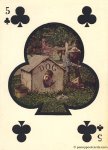Little bit of information on Canibus-Lupus.
Wolf, my native sign..........

The pups remain at whelping dens for approximately two weeks. When they begin to move around outside, another member of the pack may sometimes babysit while the parents go hunting. Occasionally, the pups are left alone for a day or longer at a time. By mid-autumn they are travelling with the pack and participating in hunting and other pack activities.The howling of a wolf pack is one of the most awe-inspiring wilderness sounds. It is a form of communication among wolf packs.
Wolves often howl spontaneously at a rendezvous site. This howling may be a form of "song-fest," for the wolves apparently enjoy it. In one instance, a pack of arctic wolves separated from some pups by a fast-flowing river howled frequently for several hours. As they did so, the pups moved anxiously along the river bank. This howling seemed to be a form of calling or coaxing. Howling by a pack may also be a way of warning other packs to keep away from occupied territory and may serve to separate packs.

The wolf was once a much maligned animal. In the western world, people feared and hated wolves, and this legacy is reflected in stories such as Little Red Riding Hood and The Boy Who Cried Wolf. In these popular children's tales the wolf is made out to be a marauder and a killer of livestock and people.
There is some basis for The Boy Who Cried Wolf, for wolves have killed cattle and sheep. But what of Little Red Riding Hood? There are no records of wolves killing humans in Canada or the United States. Yet, when wolves were spotted near rural communities, fear used to grip the populace. Over time this has become less prevalent. Today, many people know that scientists studying wolves have lived very close to dens where there were pups without being attacked. They have even taken pups from a den without being molested. The parents have usually run away, returning later only to take their young to a more private den or to a rendez-vous site (a place where the pack meets).Wolf pups are usually born in a den that, in coniferous forests and on tundra, is commonly dug in a type of soil that lends itself to digging, such as in an esker (caused by glacial meltwater) or similar area. In mixed forest areas the den may be located in an old pine stump or rock crevice. The pack usually remains at the whelping den for a month or more unless it is disturbed.
There is some basis for The Boy Who Cried Wolf, for wolves have killed cattle and sheep. But what of Little Red Riding Hood? There are no records of wolves killing humans in Canada or the United States. Yet, when wolves were spotted near rural communities, fear used to grip the populace. Over time this has become less prevalent. Today, many people know that scientists studying wolves have lived very close to dens where there were pups without being attacked. They have even taken pups from a den without being molested. The parents have usually run away, returning later only to take their young to a more private den or to a rendez-vous site (a place where the pack meets).Wolf pups are usually born in a den that, in coniferous forests and on tundra, is commonly dug in a type of soil that lends itself to digging, such as in an esker (caused by glacial meltwater) or similar area. In mixed forest areas the den may be located in an old pine stump or rock crevice. The pack usually remains at the whelping den for a month or more unless it is disturbed.

The pups remain at whelping dens for approximately two weeks. When they begin to move around outside, another member of the pack may sometimes babysit while the parents go hunting. Occasionally, the pups are left alone for a day or longer at a time. By mid-autumn they are travelling with the pack and participating in hunting and other pack activities.The howling of a wolf pack is one of the most awe-inspiring wilderness sounds. It is a form of communication among wolf packs.

Wolves often howl spontaneously at a rendezvous site. This howling may be a form of "song-fest," for the wolves apparently enjoy it. In one instance, a pack of arctic wolves separated from some pups by a fast-flowing river howled frequently for several hours. As they did so, the pups moved anxiously along the river bank. This howling seemed to be a form of calling or coaxing. Howling by a pack may also be a way of warning other packs to keep away from occupied territory and may serve to separate packs.

Wolves are not to be feared. If you come around a corner and see this, chances are he's crapped his pants at the sight of a human and ran before your brain can even register what you just saw. Then, he's gone...........



3 comments:
great post!
Renae -
I found you via myutopia, and thanks to her for that. I'm definitely going to be bookmarking your blog.
Wolves are amazing creatures, in my book. Unfortunately, people still panic over the possibility they might be in the area. Here in the UP of Michigan, we've had them killed, despite their (at the time) protected status.
Thanks for the information. Hopefully it will help someone to a better understand of these majestic creatures.
cjh
I love wolves. My wife and I visited a wolf sanctuary in Alaska some years ago. They were lovely.
And in a zoo in NJ we listened to one male wolf cry for his deceased wife for hours. It was almost unbearable to listen to. Beautiful creatures.
Post a Comment